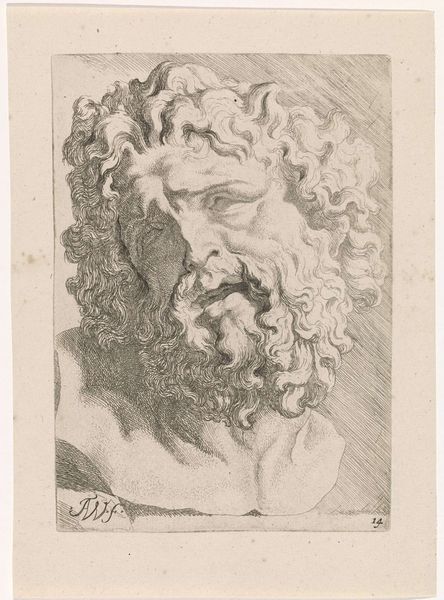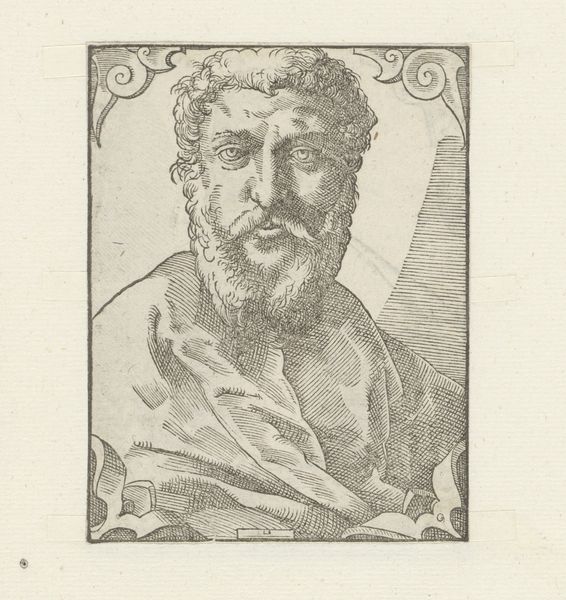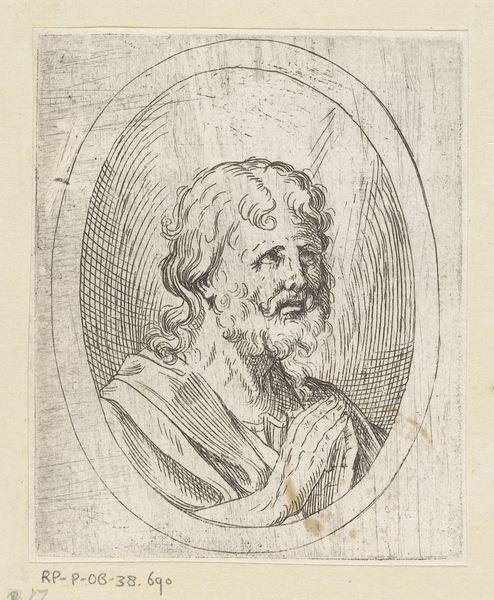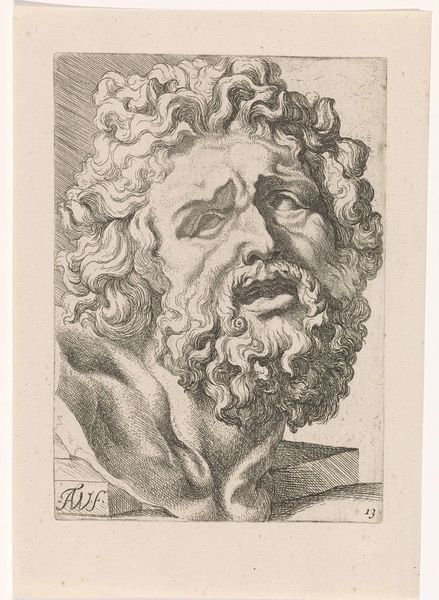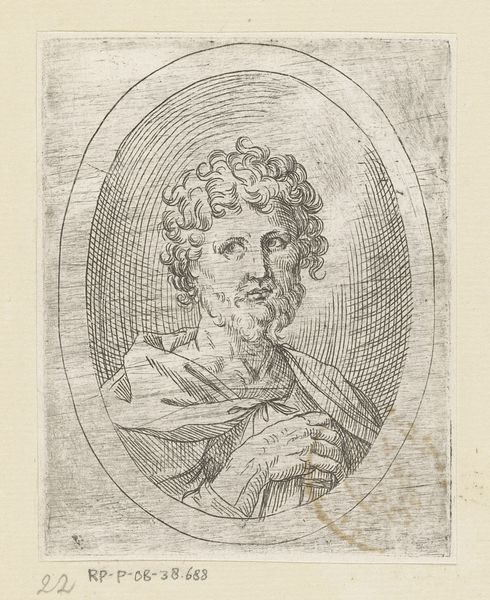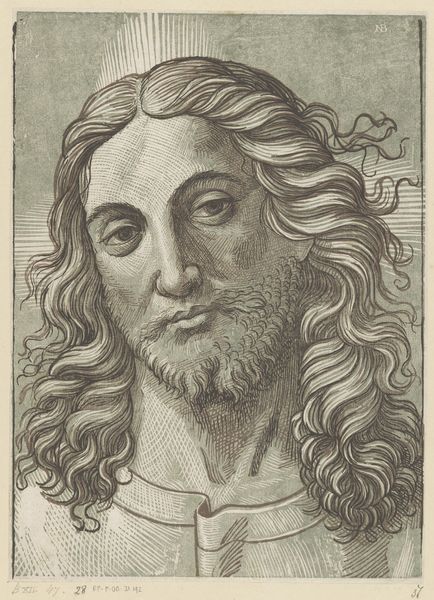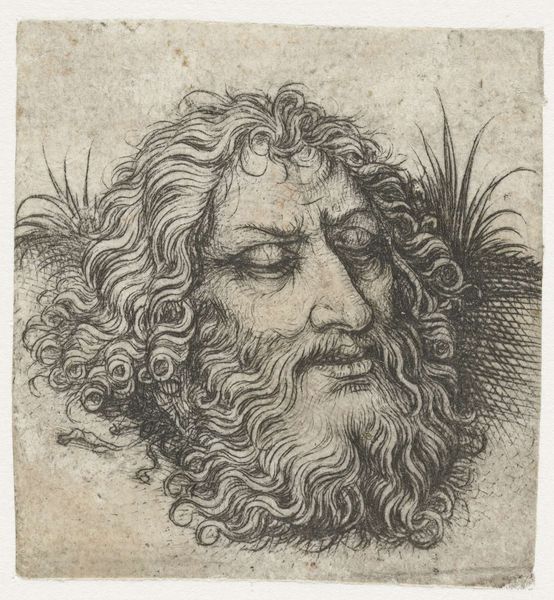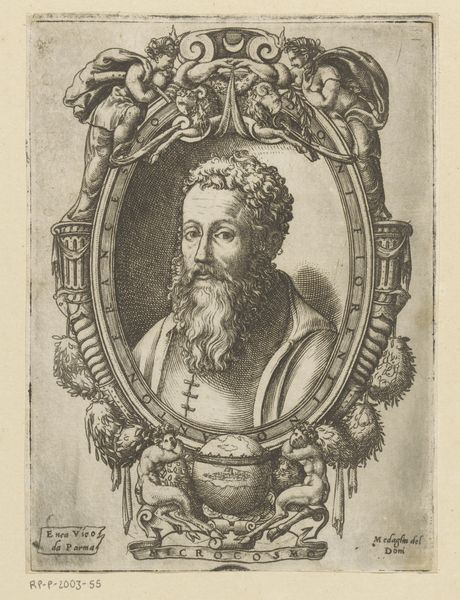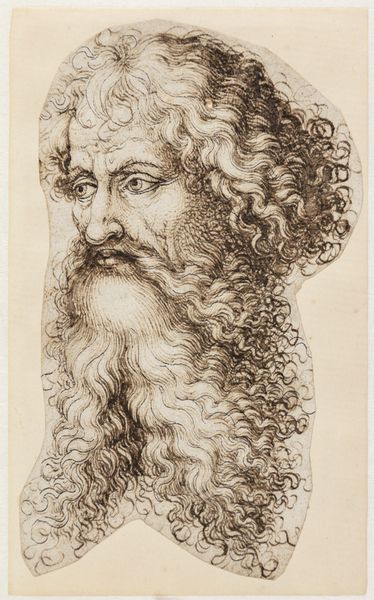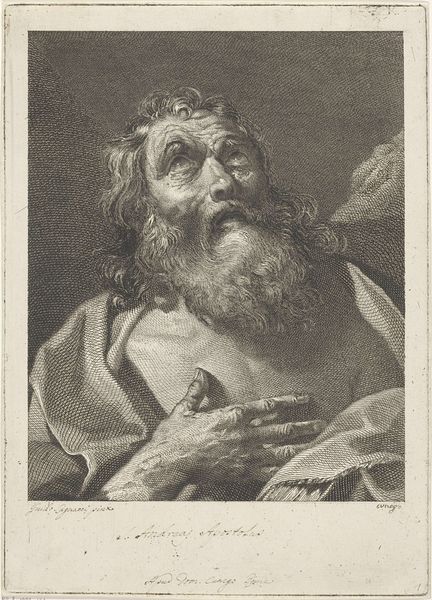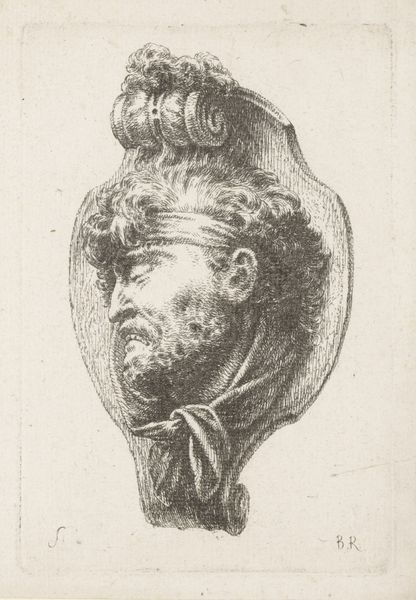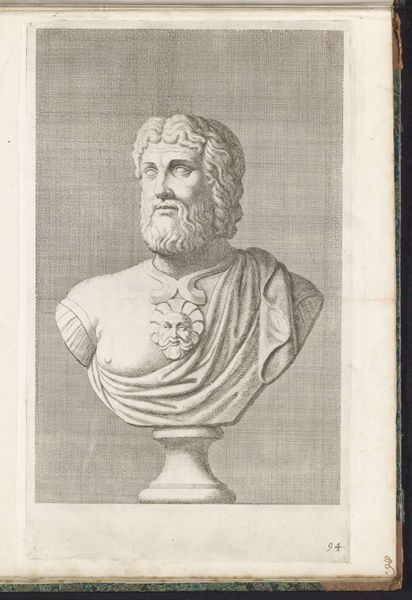
print, engraving
#
portrait
#
baroque
# print
#
figuration
#
form
#
ancient-mediterranean
#
engraving
Dimensions: height 160 mm, width 107 mm
Copyright: Rijks Museum: Open Domain
This is Jan de Bisschop’s etching of a sculpted bust of Emperor Commodus as Hercules, made in the Netherlands around the mid-17th century. De Bisschop was instrumental in establishing the Dutch classical style, becoming a founding member of the Confrerie Pictura, a society of artists in The Hague. In this print, Commodus appears as the mythological hero, Hercules. He wears the Nemean lion's skin, a symbol of strength. Note how this idealized portrait blends imperial power with divine attributes. The practice of portraying rulers as gods or heroes was a way to legitimize their authority and to create a cult of personality around them. De Bisschop’s print is not just a copy, but an interpretation. The print would have served as a valuable resource for artists and scholars interested in classical antiquity. The Rijksmuseum holds a collection of prints of classical sculptures like this, documenting the taste and scholarship of the time. We can look to sources such as inventories and treatises on art to find out more about the cultural value and meaning that people gave to classical imagery.
Comments
No comments
Be the first to comment and join the conversation on the ultimate creative platform.
